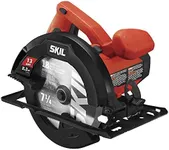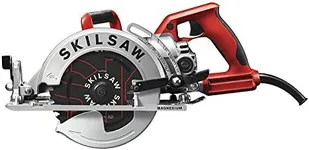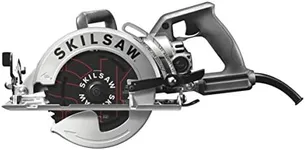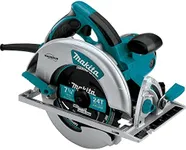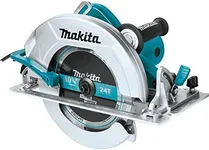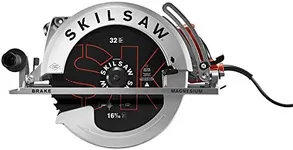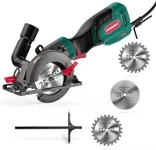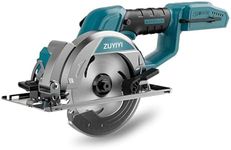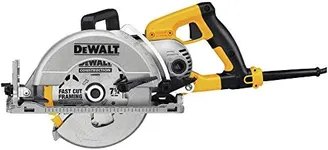Buying Guide for the Best Corded Circular Saw
When choosing a corded circular saw, it's important to consider several key specifications to ensure you get the best tool for your needs. A corded circular saw is a powerful and reliable tool for cutting wood and other materials, and selecting the right one can make your projects easier and more efficient. Here are the key specs to consider and how to navigate them.Power (Amps)The power of a corded circular saw is measured in amps. This spec is important because it determines how much cutting power the saw has. Generally, saws range from 10 to 15 amps. For light-duty tasks, a saw with 10-12 amps may be sufficient. For more demanding tasks, such as cutting through thick or hard materials, a saw with 13-15 amps is recommended. Consider the types of projects you will be working on to determine the right power level for you.
Blade SizeThe blade size of a circular saw is typically measured in inches and determines the depth of cut the saw can achieve. Common blade sizes are 6.5 inches, 7.25 inches, and 8.25 inches. A 7.25-inch blade is the most popular and versatile, suitable for most general-purpose cutting tasks. Smaller blades are lighter and easier to handle, making them ideal for precision work or smaller projects. Larger blades can cut deeper and are better for heavy-duty tasks. Choose a blade size based on the depth of cut you need and the type of materials you will be cutting.
Speed (RPM)The speed of a circular saw is measured in revolutions per minute (RPM). This spec is important because it affects how quickly and smoothly the saw can cut through materials. Higher RPMs generally mean faster and cleaner cuts. Most corded circular saws have speeds ranging from 4,000 to 6,000 RPM. For general use, a saw with around 5,000 RPM is usually sufficient. If you need to make very precise or fine cuts, look for a saw with higher RPM. Consider the type of cuts you will be making to determine the right speed for your needs.
Bevel CapacityBevel capacity refers to the maximum angle at which the saw can tilt to make beveled cuts. This spec is important for tasks that require angled cuts, such as creating miter joints or cutting roof rafters. Most circular saws offer a bevel capacity of 45 degrees, but some can go up to 55 degrees or more. If you frequently work on projects that require angled cuts, look for a saw with a higher bevel capacity. Consider the types of cuts you will be making and choose a saw with a bevel capacity that meets your needs.
WeightThe weight of a circular saw can affect how easy it is to handle and maneuver. Lighter saws are easier to control and reduce fatigue during extended use, making them ideal for overhead or precision work. Heavier saws, on the other hand, tend to be more stable and can provide more cutting power, which is beneficial for heavy-duty tasks. Circular saws typically weigh between 8 to 15 pounds. Consider the type of work you will be doing and choose a saw with a weight that you can comfortably manage.
ErgonomicsErgonomics refers to how comfortable and easy the saw is to use. This includes the design of the handle, the placement of controls, and the overall balance of the tool. A saw with good ergonomics will reduce strain and fatigue, making it easier to use for extended periods. Look for features such as a comfortable grip, easy-to-reach controls, and a well-balanced design. Consider how the saw feels in your hand and choose one that you find comfortable and easy to control.
DurabilityDurability is an important factor to consider, especially if you plan to use the saw frequently or for heavy-duty tasks. A durable saw will be made from high-quality materials and have a solid construction that can withstand regular use. Look for features such as a robust motor, a sturdy base plate, and a well-built housing. Consider the types of projects you will be working on and choose a saw that is built to last.

